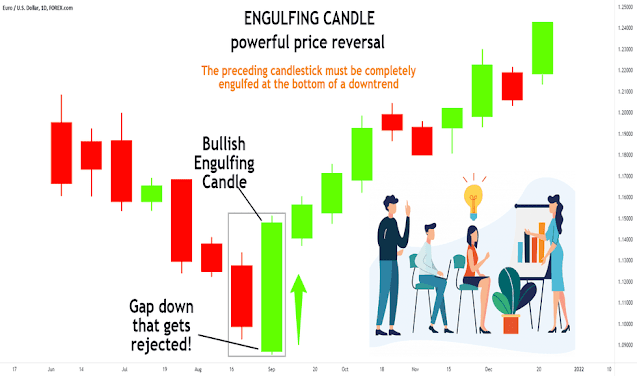Key Points for Creating Effective Company Fact Sheets
A company fact sheet is a concise, one-page document that provides a snapshot of a business’s essential information. It’s a vital tool for investors, analysts, media, and stakeholders to quickly understand a company’s profile, performance, and potential. This blog outlines the main points to include when creating an effective company fact sheet.
1. Company Overview
Provide a brief introduction to the company to set the context.
- Key Elements:
- Full company name and logo.
- Founding year and headquarters location.
- A one-sentence mission statement or tagline summarizing the company’s purpose.
- Industry or sector (e.g., technology, healthcare, retail).
- Why It Matters: This section gives a quick sense of the company’s identity and purpose. For example, "Founded in 2004, Tesla, Inc., headquartered in Austin, Texas, aims to accelerate the world’s transition to sustainable energy through innovative electric vehicles and energy solutions."
2. Business Description
Summarize what the company does and its core offerings.
- Key Elements:
- Primary products or services.
- Target markets or customer segments.
- Unique value proposition or competitive advantage (e.g., proprietary technology, strong brand).
- Why It Matters: Helps stakeholders understand the company’s operations and market position. For instance, a fact sheet for a SaaS company might highlight its cloud-based software solutions for small businesses.
3. Key Financial Metrics
Include critical financial data to showcase the company’s performance.
- Key Metrics:
- Revenue (latest fiscal year or quarter).
- Net income or profit margin.
- Earnings per share (EPS) for public companies.
- Total assets and liabilities (from the balance sheet).
- Market capitalization (for public companies).
- Optional: Year-over-year growth percentages or free cash flow.
- Why It Matters: Financials provide insight into profitability, stability, and growth potential. Ensure numbers are accurate and sourced from recent financial reports.
4. Management Team
Highlight the leadership driving the company.
- Key Elements:
- Names and titles of key executives (e.g., CEO, CFO, COO).
- Brief mention of their experience or notable achievements.
- Why It Matters: Strong leadership builds confidence in the company’s direction. For example, “Led by CEO Jane Doe, a 20-year industry veteran who scaled XYZ Corp to a $1B valuation.”
5. Market and Industry Position
Outline the company’s standing in its industry.
- Key Elements:
- Market share or competitive ranking (if available).
- Key competitors.
- Industry trends or growth outlook (e.g., “Operating in the $100B cybersecurity market, growing at 10% annually”).
- Why It Matters: Shows how the company fits into the broader market and its potential for growth or resilience.
6. Recent Achievements or Milestones
Showcase recent successes to highlight momentum.
- Key Elements:
- Product launches or innovations.
- Major partnerships or contracts.
- Awards, certifications, or recognitions.
- Significant financial milestones (e.g., reaching $1B in revenue).
- Why It Matters: Demonstrates the company’s progress and credibility. For example, “Launched AI-powered platform in Q2 2025, securing partnerships with three Fortune 500 companies.”
7. Capital Structure and Ownership (For Public Companies)
Detail the company’s ownership and stock information.
- Key Elements:
- Stock ticker symbol and exchange (e.g., NASDAQ: AAPL).
- Outstanding shares and major shareholders (e.g., institutional ownership).
- Dividend policy (if applicable).
- Why It Matters: Investors need clarity on ownership and potential returns. For private companies, mention funding rounds or major investors if relevant.
8. Contact Information
Provide details for further inquiries.
- Key Elements:
- Corporate website URL.
- Investor relations contact (email or phone).
- Social media handles (e.g., X, LinkedIn).
- Why It Matters: Makes it easy for stakeholders to engage with the company or seek additional information.
9. Visual Design and Formatting
Ensure the fact sheet is visually appealing and easy to read.
- Key Tips:
- Use bullet points, headings, and concise text.
- Include charts or graphs for financials (e.g., revenue growth over time).
- Incorporate brand colors and logo for consistency.
- Keep it to one page for brevity.
- Why It Matters: A clean, professional design enhances readability and leaves a positive impression.
10. Forward-Looking Statements (If Applicable)
Include a disclaimer for any projections or estimates.
- Key Elements:
- Note that forward-looking statements involve risks and uncertainties.
- Reference regulatory guidelines (e.g., SEC requirements for public companies).
- Why It Matters: Protects the company from legal liability and sets realistic expectations for readers.
Best Practices for Fact Sheets
- Keep It Concise: Aim for clarity and brevity, avoiding jargon or excessive detail.
- Update Regularly: Refresh the fact sheet quarterly or after major events (e.g., earnings reports).
- Tailor to Audience: Customize for investors, media, or partners as needed.
- Verify Data: Ensure all figures and claims are accurate and sourced from reliable documents.
Conclusion
A well-crafted company fact sheet is a powerful tool to communicate essential information to stakeholders. By including a clear overview, financial metrics, leadership details, market position, and recent achievements, you can create a compelling snapshot of the company’s value and potential. Keep the design clean, the data accurate, and the content concise to make a lasting impact.
Whether you’re a startup seeking investors or a public company engaging with analysts, a strong fact sheet can set you apart. Start drafting yours today, and ensure it reflects your company’s unique strengths!

